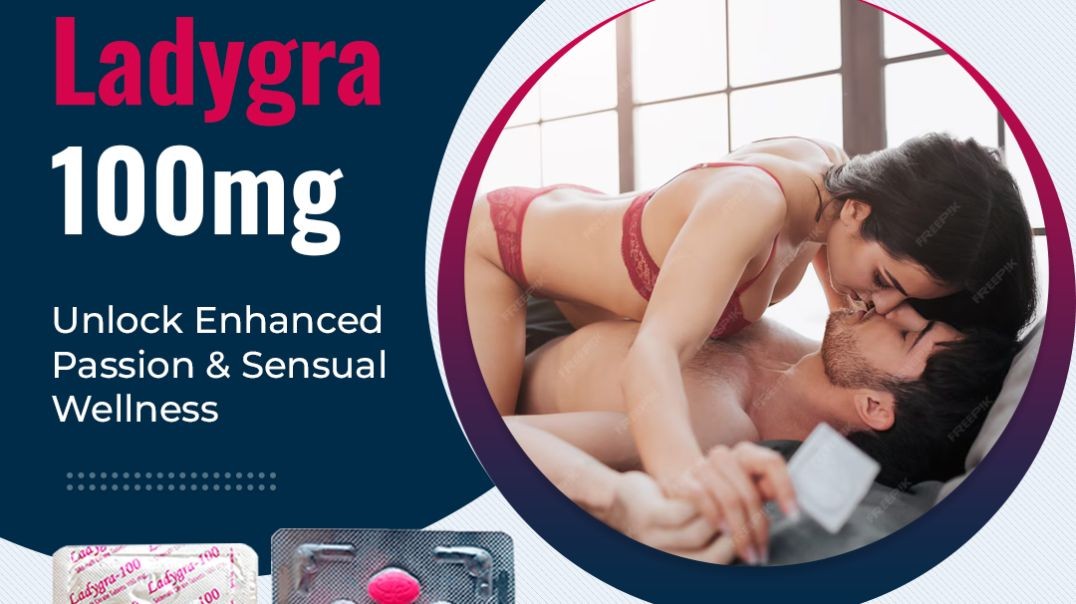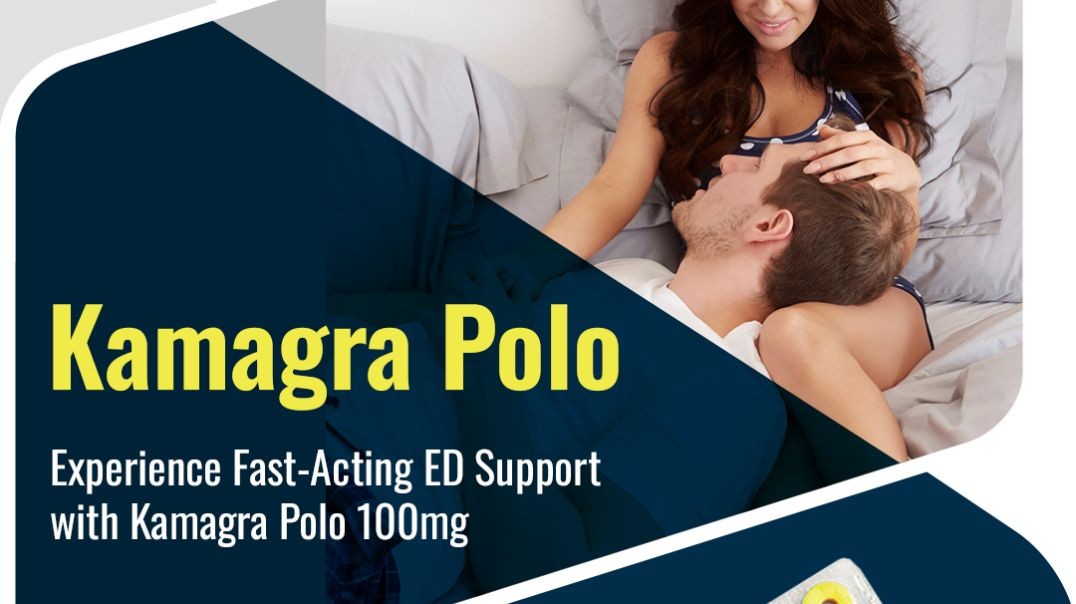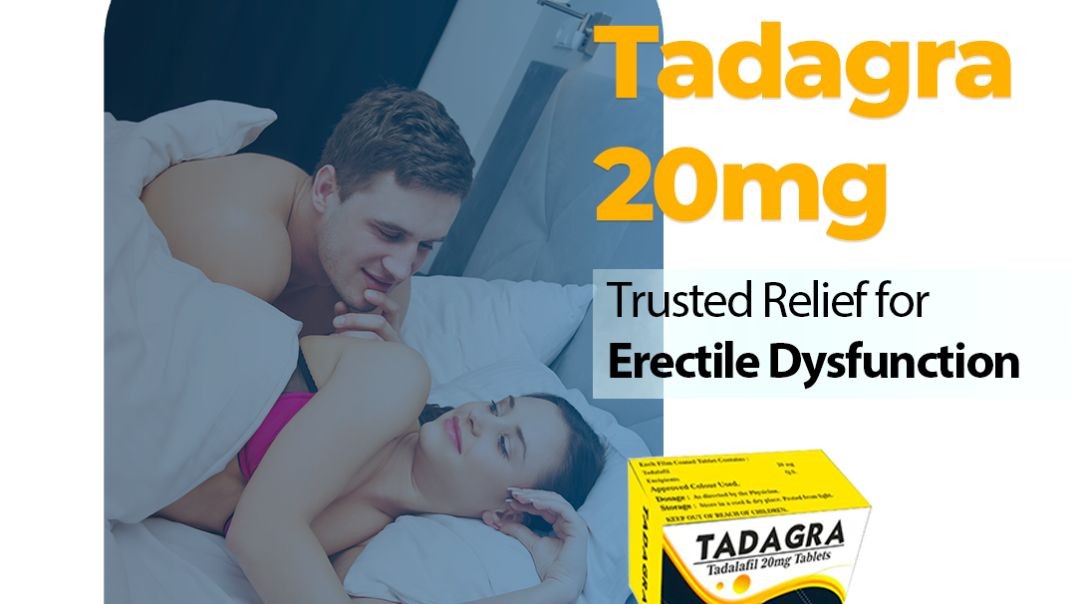Top videos
Ladygra 100mg is an oral medication that works to manage the problem of women's sensual disorder. It contains an active substance of Sildenafil 100mg.
Buy Now : https://www.rsmenterprises.in/....product/viewdetail/l
#rsmenterprises #health #healthcare #womenviagra #ladygra100mg #femalesildenafil100mg #femalesensualpills #femaleviagra
Welcome to the second episode of Fertility Focus, a channel on which we share scientific information about men's and women's health.
This episode focuses on male health, specifically how lifestyle affects male fertility. Join Dr. Rhythm Gupta as we explore various factors influencing sperm quality and fertility.
What are we discussing in this podcast?
✅00:57 What is lifestyle according to you? Lifestyle is essentially a way of living, encompassing daily habits and interactions that can affect fertility.
✅1:33 What are men doing wrong in their daily routines that affect their fertility? Occupational hazards, exposure to toxins, poor diet, and stress can negatively impact sperm quality and fertility.
✅2:47 How do farmers’ occupational risks affect their sperm count? Pesticide exposure can significantly reduce sperm count, posing a fertility risk.
✅4:10 What are the key parameters for a healthy semen analysis? WHO guidelines suggest a total sperm count of 39 million per ejaculate is sufficient for fertility.
✅6:40 How does diet impact male fertility, and are there superfoods that boost it? A balanced diet rich in fruits, vegetables, and antioxidants is crucial for maintaining healthy sperm parameters.
✅8:05 How does weight and hormonal imbalance affect sperm quality? Increased fat cells convert testosterone to estrogen, negatively impacting sperm production and quality.
✅9:24 Can using plastics affect male fertility? Yes, chemicals like BPA in plastics can mimic estrogen and disrupt hormone balance, affecting sperm production.
✅11:03 How do stress and mental health impact fertility? Stress can disrupt hormonal balance and negatively affect sperm formation and sexual health.
✅12:30 What role do smoking and alcohol play in male fertility? Smoking directly affects sperm count and quality, while excessive alcohol consumption can lead to sexual dysfunction and negatively impact sperm parameters.
We hope today's episode provides valuable insights into how lifestyle choices affect male fertility.
By making informed decisions and adopting healthier habits, you can significantly improve your reproductive health.
Keep watching Fertility Focus for more informative episodes and tips on planning and carrying a healthy pregnancy.
Don't forget to like, share, and subscribe to our channel for more updates and expert advice on fertility and health!
------------------------------------------------------------------------------------------------------------------------------
About Dr. Rhythm Gupta and Excel IVF
Becoming parents is the most blissful moment in a person’s life. Infertility not only affects the couple but equally disturbs the entire family. Excel IVF is one of the most trustworthy fertility hospital and IVF center in Delhi that renders exceptional patient care. For all kind of fertility challenges, Excel IVF offer highly specialized and comprehensive treatments including high-risk pregnancy and neonatology services.
Founded by Dr. Rhythm Gupta, a highly qualified IVF expert in Delhi, Excel IVF offers treatments of an exceptional team of specialists, sonographers, nurses, counselors, etc. who have high-end experience and exceptionally professional in their respective fields. Our efficient team is backed with the latest tools and technologies.
To know more
Consult Dr. Rhythm Gupta, an Infertility Specialist at Excel IVF.
☎️ 98114-74471 | 89209-63596
📧 drrhythmgupta@gmail.com
🌎 Visit our website: https://excelivf.com/
https://www.instagram.com/excel_ivf/
https://www.facebook.com/excelivf/
https://www.linkedin.com/in/rhythm-ahuja-1a4752b3
#fertilityfocus #malehealth #lifestyleandfertility #spermquality #malefertility #healthtips #drrhythm #infertility #healthyliving #balanceddiet #occupationalhazards #mentalhealth #stressrelief #quitsmoking #healthyhabits
Buy Kamagra Polo is used to get and sustain an erection in ED in men. Kamagra Polo for smooth muscle relaxation allows increased blood flow into certain areas of the penis, sexual arousal in harsh, prolonged erection for maximum sexual performance.
Buy Now : https://www.rsmenterprises.in/....product/viewdetail/k
#rsmenterprises #health #healthcare #kamagrapolo #sildenafilpolo #edmedicine #genericviagrapolo #maleviagrapolo
Tadalafil 20mg (Tadagra 20mg) is an oral treatment for erectile dysfunction, which offers the longest performance period on the market, when taken 30-60 minutes before intercourse it can last up to 36 hours.
Buy Now : https://www.rsmenterprises.in/....product/viewdetail/t
#rsmenterprises #health #healthcare #tadagra20mg #tadalafil20mg #edmedicine #genericcialis #malecialis
Reusable Lap Instruments Multi-functional laparoscopic instruments. Choose from many handle styles, three instrument styles, 33cm or 45cm lengths, and dozens of dissectors, graspers, forceps, and scissors. Lap Needle Electrodes Monopolar needle electrodes for laparoscopic surgery.
a complete discription of the instruments used in laparacopic surgeries and there function
A video shows how to deal with thermal burns
Bone marrow examination refers to the pathologic analysis of samples of bone marrow obtained by bone marrow biopsy (often called a trephine biopsy) and bone marrow aspiration. Bone marrow examination is used in the diagnosis of a number of conditions, including leukemia, multiple myeloma, anemia, and pancytopenia. The bone marrow produces the cellular elements of the blood, including platelets, red blood cells and white blood cells. While much information can be gleaned by testing the blood itself (drawn from a vein by phlebotomy), it is sometimes necessary to examine the source of the blood cells in the bone marrow to obtain more information on hematopoiesis; this is the role of bone marrow aspiration and biopsy.
Avideo showing suturing of the uterus and abdominal wall after c-section
This 38 year old woman has increasingly intractable RUQ pain after cholecystectomy done one year prior. LFTs and pancreatic enzymes have been normal, and ducts are non-dilated, thus she is a Type III possible SOD patient. Initial goal is to define course of pancreatic duct for manometry. 5-4-3 Co...ntour catheter (Boston Scientific) is used to perform the pancreatogram which shows a small straight distal duct. The aspirating triple lumen manometry catheter (Wilson Cook) is used to cannulate the pancreatic duct, with continuous aspiration of fluid once the duct is entered. Careful stationed pullthrough manometry shows markedly abnormal basal pressures in both leads in the pancreatic sphincter. Plan is dual pancreatic and biliary sphincterotomy. Biliary manometry will not now change our plan therefore is omitted. Our first goal is to access the pancreatic duct so we can guarantee wire access for placement of a small caliber pancreatic stent which is critical for safety. Contrast is injected as the 0.018in Roadrunner wire (Wilson Cook) is advanced in order to outline the course of main duct. A separate biliary orifice is clearly seen, unusual in SOD patients. A soft 4Fr 3cm single inner flange pancreatic stent (Hobbs Medical) is placed. We did not want to use our typical 9cm long unflanged stent as even a 3 or 4 French stent might be traumatic to the tiny caliber of this duct out in the body of the gland. Next the bile duct is cannulated with a papillotome (Autotome 39, Boston Scientific), showing a small perhaps 6mm bile duct. Biliary sphincterotomy is performed in very careful stepwise fashion as landmarks are unclear and perforation is higher risk in small duct SOD patients. On the other hand, inadequate sphincterotomies offer limited chance of symptom relief. You can see here a patulous sphincterotomy. Next a pancreatic sphincterotomy is performed with the needle knife (Boston Scientific) over the pancreatic stent. Again this is performed cautiously due to the small size of the pancreatic duct. We are reaching along the stent and cutting the fibers deeply. This is a limited pancreatic sphincterotomy due to small pancreatic duct size, and concern for scarring of the pancreatic duct. It is important to document passage of the stent by xray or remove it endoscopically with two weeks or so. We and many other specialized centers perform dual sphincterotomies at the first ERCP in all SOD patients with abnormal pancreatic manometry and frequent or intractable symptoms based on the belief that response rates are better than for biliary sphincterotomy alone.
show your patients how to use an inhaler
Cervical Cap for Birth Control
1 yıldır astım tedavisi gören 45 yaşında bayan hasta. Nefes darlığı şikayeti artması üzerine yapılan bronkoskopide trakea lümenini tamayakın tıkayan kitle gözlendi. Coller insizyonu ve parsiyel sternotomi ile yaklaşıldı ve rezeke edildi.
What Happens During an Erection?
In order to attain an erection, messages from the brain and other sense organs trigger the arteries of the penis to dilate. This allows an increased amount of blood to flow into three columns of spongy tissue in the penis.
As the arteries supplying blood to the corpus spongiosum and to the two larger columns, the corpus cavernosa, become filled with blood; the penis grows and becomes rigid. Pressure of the engorged tissue against the veins in the penis effectively traps blood within the penis until climax is reached or the sensation wanes.
What Are Penile Implants?
Impotence, or the inability to attain or maintain an erection, can be caused by a disruption at any stage in this process. Several types of penile implants are available that create an artificial erection. Two common types of implants are the semi-rigid malleable rod and the inflatable implant.
•The semirigid malleable rod is usually made of plastic with a core of flexible wire. These rods can be bent down to conceal the penis under clothing or raised to form an artificial erection.
•The inflatable implant is more complex and involves several working parts: a reservoir of fluid that is implanted into the abdomen, a pump system located in the scrotal sac near the testes, and two inflatable cylinders.
How Penile Implants Help Erectile Fuctioning
In order to attain an erection, the scrotal pump must be squeezed repeatedly to propel fluid into the penile cylinders. When an erection is no longer desired, a release valve is pressed on the side of the pump and the cylinders deflate.
Before Having Penile Implant Surgery
Persons considering these types of implants should speak with their physician or healthcare professional about possible risks and complications.
This video documents the experience of one of our Mommy Makeover patients. She is 39 years old, 5’4” tall, and of average weight. Following the birth of her twins, she wanted to improve her abdominal wall contour and correct the lack of shape and firmness in her breasts.
Antisocial personality disorder (ASPD) is defined by the American Psychiatric Association's Axis II (personality disorders) of the Diagnostic and Statistical Manual (DSM-IV-TR) as "a pervasive pattern of disregard for, and violation of, the rights of others that begins in childhood or early adolescence and continues into adulthood." Antisocial personality disorder is sometimes wrongly referred to as psychopathy or sociopathy. Currently, neither psychopathy nor sociopathy are valid diagnoses described in the Diagnostic and Statistical Manual of Mental Disorders, and the ICD-10 of the World Health Organization also lacks psychopathy as a diagnostic disorder. Psychopathy is normally seen as a subset of the antisocial personality disorder, but Blair believes that the antisocial personality disorder and psychopathy may be separate conditions altogether.
Excision of Rectovaginal Nodule
Peritoneal Dialysis for Kidney Disease
Tooth Anatomy 3D Medical Animation
M.Torabi Nami MD, PhDc Department of Neuroscience Institute for Cognitive Science Studies (ICSS), Tehran 15948 Iran Torabi_m@iricss.org Abstract Sleepiness, tiredness and fatigue are complaints which must be thoroughly analyzed to eliminate blur and ambiguity. Physiological sleepiness (“sleep pressure”) increases while being awake and additionally underlies the circadian rhythm with a lower threshold to fall asleep during night time. Excessive daytime sleepiness (EDS) is considered normal only after sleep deprivation. Clinically, EDS manifests by frequents daytime napping and/or reduced alertness with automatic behavior or - in its extreme form - in recurrent attacks of sudden, uncontrollable compulsion to sleep also in inappropriate situations (= “sleep attacks”). EDS is “objectively” addressed by measuring the mean sleep latency to four to five nap opportunities throughout the day using the multiple sleep latency test (MSLT) or the maintenance of wakefulness test (MWT). EDS denotes both, a ready entrance into sleep as well as difficulty in staying awake during daytime or accordingly in inappropriate situations. These two partially independent aspects of EDS are separately assessed by the “passive” MSLT and the “active” MWT respectively. For that reason the MSLT and MWT only weakly correlate with each other when tested over a broad range of patients with EDS. It is important to keep in mind, that these tests are importantly influenced by a great variety of factors such as mood, anxiety, and motivation. “Vigilance” comprises wakefulness, alertness and attention and therefore is more than just the reciprocal to sleepiness. Cognitive performance tasks such as Steer Clear Reaction Time Test (SCRTT) or driving simulators require the complete integrity of vigilance to achieve normal results. Hypersomnia is usually broadly defined as the combination of abnormally prolonged night-time sleep (regularly >10 h) with EDS during ≥1 months. On the other hand, the term hypersomnia has also been used in a narrower scene for the isolated abnormality of a prolonged night-time sleep need (>10 h). “Tiredness”, also in colloquial language often used for sleepiness, in a broader sense also describes the feeling of lack of energy, motivation and initiative. These patients seek rest rather than sleep. They often cannot fall asleep when given the opportunity in spite of feeling tired, and hence, in an MSLT, do not show an abnormally short sleep latency. Furthermore, tiredness (and fatigue) as opposed to sleepiness has a mental (“central”) and physiological (bodily or “peripheral”) component, which the patients can readily distinguish. Patients with insomnia, mild sleep apnea syndrome, or depression rather suffer from mental tiredness than sleepiness during the day. The simple subjective self-assessment using the Epworth Sleepiness Scale (ESS) quite reliably differentiates between sleepiness and mental tiredness (without sleepiness), which makes it a widely used test. The term “fatigue” is also heterogeneously used. In physiology the “fatigue” implied a “time on task performance decrement” to describe decreasing muscle force during a sustained physical effort. In clinical medicine one distinguishes physical (“peripheral”) from mental (“central”) fatigue and the term usually denotes a chronic and more abnormal situation than tiredness. In a broad sense “fatigue” implies a deficiency in coping satisfactorily with mental and physical work load. The chronic fatigue syndrome entails both mental as well as a physical fatigue (so called “leaden paralysis” of limbs). Depressive states are often associated with insomnia and fatigue, but there are also cases with hypersomnia rather than insomnia ( non organic hypersomnia , “atypical depression” or “hypersom




















